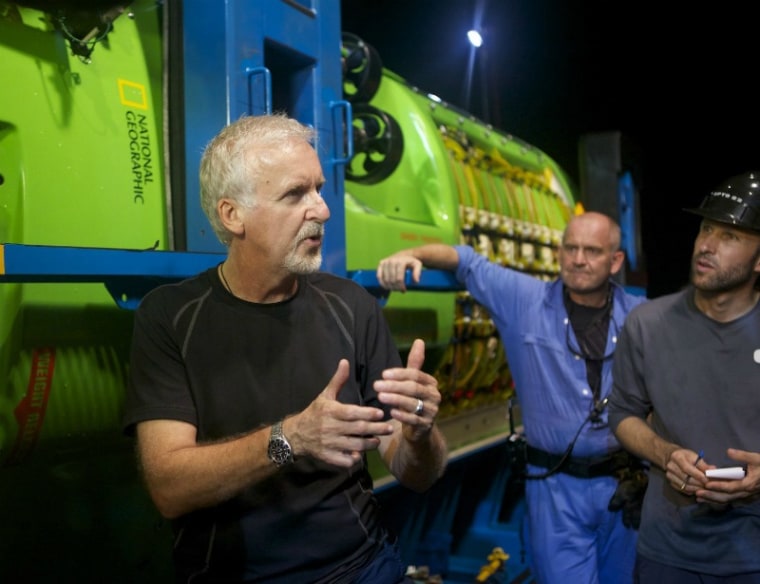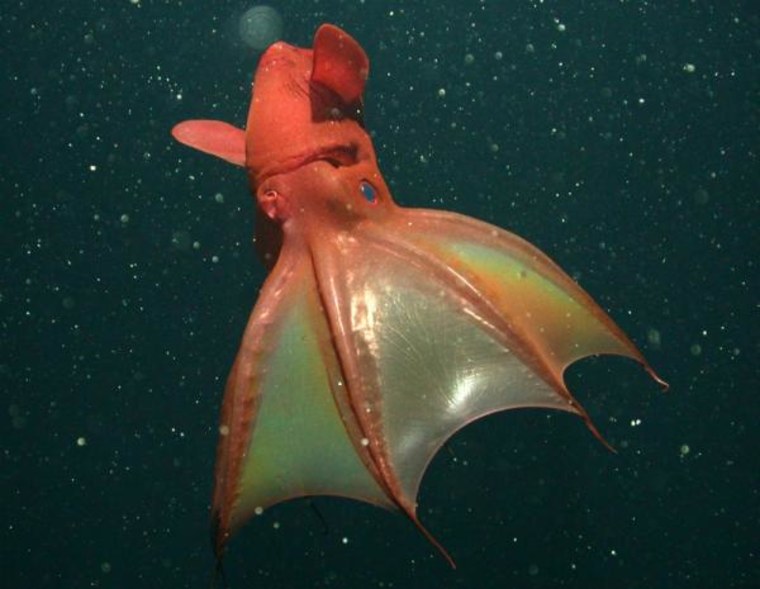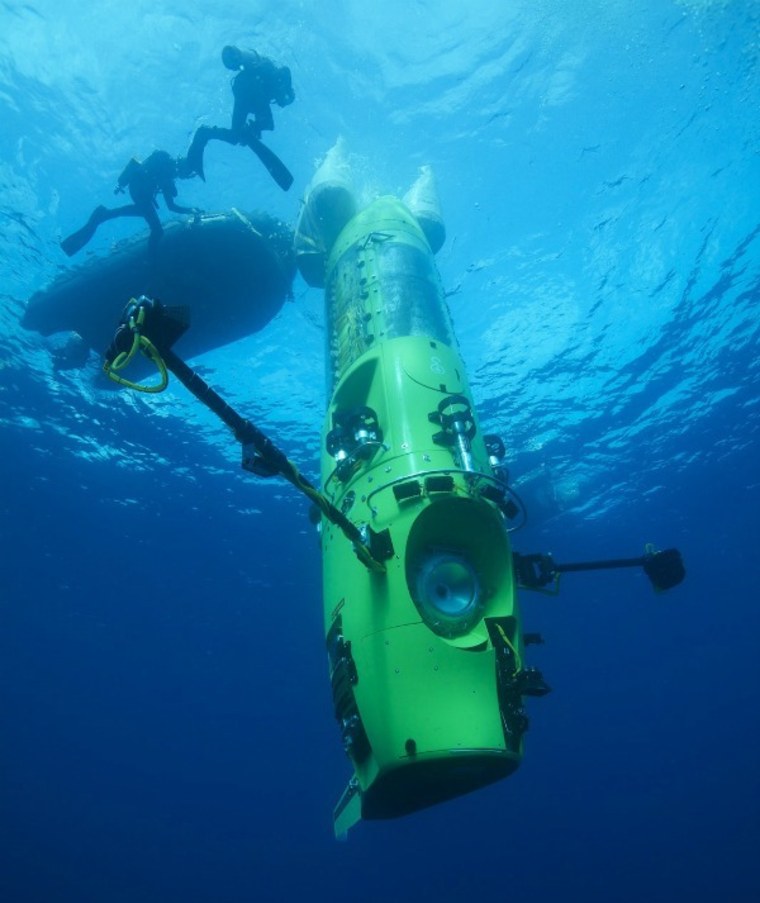Filmmaker and explorer James Cameron has unveiled plans to visit the deepest place on planet Earth in the coming weeks, aboard a state-of-the-art, deep-diving craft built beneath a veil of secrecy in Australia.
If successful, the dive will mark only the second time that humans have ever visited the bottom of the Mariana Trench, some 7 miles (11.2 kilometers) beneath the surface of the Pacific Ocean.
The lime-green, cylindrical craft, dubbed the Deepsea Challenger — a play on the name of the deepest spot in the Mariana Trench, known as Challenger Deep — is a single-pilot submersible built to withstand the crushing pressures at 36,200 feet (11,030 meters) below the ocean's surface, and is capable of bringing back samples for scientific study.
The famed director and writer behind Hollywood blockbusters such as "Titanic" and "Avatar," Cameron has long embraced new technology and adventure both on and off the screen. His latest seafaring adventure is backed by the National Geographic Society and Rolex.

Deep history
Humans first and last reached the Challenger Deep more than 50 years ago. In 1960, U.S. Navy Lt. Don Walsh and Jacques Piccard, a Swiss native, rode a massive metal vessel — the Trieste — to the seafloor and spent 20 minutes in the darkness there.
According to a release from National Geographic, Cameron plans to spend six hours at the bottom of the Pacific Ocean trench, which lies about 200 miles (322 km) southwest of Guam, to collect samples for research in marine biology, microbiology, astrobiology, marine geology and geophysics.
The announcement comes on the heels of a successful deep-sea dive last week. Cameron and his team piloted the Deepsea Challenger to a depth of more than 5 miles (8 km) off the coast of Papua New Guinea — an area near the southern edge of the Mariana Trench.
Race to the bottom of the sea
Cameron is not alone in his quest to return humans to the deepest and most unexplored places on the planet. A crop of well-funded parties have recently sent humans to some of the deepest spots on Earth aboard a crop of newfangled submersibles.
British tycoon Richard Branson's Virgin Oceanic effort may be the best-known of the privately funded endeavors, while countries such as China have also sent manned crafts to some of the oceans' most inaccessible places, albeit for different reasons.

The deep sea — roughly defined as everything below 650 feet (200 m) — comprises a stunning 240 million cubic miles (1 billion cubic km) and more than 90 percent of the living space on the planet. Scientists are still trying to answer the most basic questions regarding it.
Over the last several decades, scientists have found some bizarre and massive creatures dwelling in the deep, such as the megamouth shark, a filter feeder that grows up to 18 feet (5 m) long, and two enormous and otherworldly squid species.
At the two deepest hydrothermal vent sites ever discovered, expeditions have recently uncovered swarms of eyeless shrimp, and bone-white clams and shimmering jellies thriving in the extreme environments.
Many scientists say that there are undoubtedly many more astonishing things awaiting discovery in the deep.
"The deep trenches are the last unexplored frontier on our planet, with scientific riches enough to fill a hundred years of exploration," Cameron said in a statement.
Reach Andrea Mustain at amustain@techmedianetwork.com. Follow her on Twitter @AndreaMustain. Follow OurAmazingPlanet for the latest in Earth science and exploration news on Twitter @OAPlanet and on Facebook.
